The article How to Choose the RIGHT Tense for Your Novel appeared first on The Write Practice.
One of the first decisions you have to make when you’re writing a novel or short story is which tense to use. There are only two viable options: past tense or present tense.*
Which tense should you choose for your novel?
*Future tense is certainly technically possible, but it’s used so rarely in fiction we’re going to skip it here.
What’s the Difference Between Present and Past Tense?
In fiction, a story in past tense is about events that happened in the past. For example:
From the safety of his pickup truck, John watched as his beloved house burned to the ground. With a blank face, he drove away.
Present tense, on the other hand, sets the narration directly into the moment of the events:
From the safety of his pickup truck, John watches as his beloved house burns to the ground. With a blank face, he drives away.
This is a short example, but what do you think? How are they different? Which version do you prefer?
Choose Between Past and Present Tense BEFORE You Start Writing Your Novel
New writers are notorious for switching back and forth between past and present tense within their books. It’s one of the most common mistakes people make when they are writing fiction for the first time.
On top of that, I often talk to writers who are halfway finished with their first drafts, or even all the way finished, and are now questioning which tense they should be using.
Unfortunately, the more you’ve written of your novel, the harder it is to change tenses, and if you do end up deciding to change tenses, it can take many hours of hard work to correct the shift.
That’s why it’s so important to choose between past and present tense before you start writing your novel.
With that in mind, make sure to save this guide, so you can have it as a resource when you begin your next novel.
Both Past Tense and Present Tense Are Fine
Past tense is by far the most common tense, whether you’re writing a fictional novel or a nonfiction newspaper article. If you can’t decide which tense you should use in your novel, you should probably write it in past tense.
There are many reasons past tense is the standard for novels. One main reason is simply that it’s the convention. Reading stories in past tense is so normal that reading present tense narratives can feel jarring and annoying to many readers. Some readers, in fact, won’t read past the few pages if your book is in present tense.
That being said, from a technical perspective, present tense is perfectly acceptable. There’s nothing wrong with it, even if it does annoy some readers. It has been used in fiction for hundreds of years, and there’s no reason you can’t use it if you want to.
Keep in mind, there are drawbacks though.
The Hunger Games and Other Examples of Present Tense Novels
I was talking with a writer friend today who used to have strong feelings against present tense. If she saw the author using it in the first paragraph of a novel, she would often put the book back on the bookstore shelf.
Then, she read The Hunger Games, one of the most popular recent examples of a present tense novel (along with All the Light We Cannot See), and when she realized well into the book that the novel was in present tense, all those negative opinions about it were turned on their heads.
Many of the biggest present-tense opponents (like Philip Pullman) use caveats like this. Some of them even blame The Hunger Games for later, less well-written present tense novels. “Hunger Games was fine,” they say, “but now every other novel is in present tense.”
However, the reality is that it has a long tradition. Here are a several notable examples of present tense novels:
Bleak House by Charles Dickens
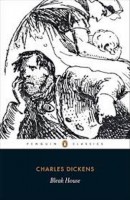
Rabbit, Run by John Updike
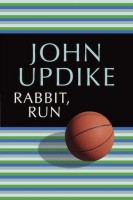
Rabbit, Run is sometimes praised for being the first book to be written entirely in present tense. But while it may have been the first prominent American novel in present tense, it was hardly the first in the world.
Ulysses by James Joyce
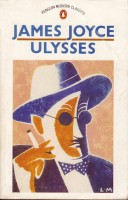
All Quiet on the Western Front by Erich Maria Remarque
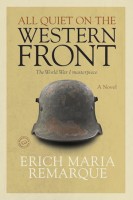
Fight Club by Chuck Palahniuk
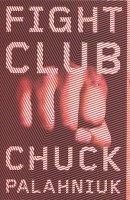
Like several of Chuck’s novels, Fight Club, published in 1999, is written in present tense.
 Bright Lights, Big City by Jay McInerney
Bright Lights, Big City by Jay McInerney
Bright Lights, Big City is notable both for being written in present tense and second-person. While it’s not necessarily something you should use as an example in your own writing, it is an interesting case.
Other Notable Novels
Here are several other notable present tense novels
- All the Light We Cannot See by Anthony Doerr
- Bird Box: A Novel by Josh Malerman (I’m reading this right now, and it’s great!)
- The White Queen by Philippa Gregory (the basis for the BBC TV Series)
- Cat’s Eye by Margaret Atwood
- Time Traveler’s Wife by Audrey Niffenegger
There are dozens of other notable and bestselling novels written in present tense. However, comic books are another example of popular present-tense writing, which use dialogue bubbles and descriptions almost universally in present tense.
5 Advantages of Present Tense
Present tense, like past tense, has its benefits and drawbacks. Here are five reasons why you might choose to use it in your writing:
1. Present Tense Feels Like a Movie
One reason authors have used present tense more often in the last century is that it feels most film-like.
Perhaps writers think they can get their book adapted into a movie easier if they use present tense, or perhaps they just want to mimic the action and suspense found in film, but whether film is the inspiration or the goal, its increasing use owes much to film.
John Updike himself credits film for his use of present tense, as he said in his interview with the Paris Review:
Rabbit, Run was subtitled originally, ‘A Movie.’ The present tense was in part meant to be an equivalent of the cinematic mode of narration…. This doesn’t mean, though, that I really wanted to write for the movies. It meant I wanted to make a movie. I could come closer by writing it in my own book than by attempting to get through to Hollywood.
Christopher Bram, author of Father of Frankenstein, says much the same, “I realized I was using it because it’s the tense of screenplays.”
2. Present Tense Intensifies the Emotions
Present tense gives the reader a feeling like, “We are all in this together.” Since the reader knows only as much as the narrator does, it can draw the reader more deeply into the suspense of the story, heightening the emotion.
3. Present Tense Works Well With Deep Point of View
Deep point of view, or deep POV, is a style of narrative popular right now in which the third person point of view is deeply embedded into the consciousness of the character.
Deep POV is like first person narrative, and has a similar level of closeness, but it’s written in third person. By some counts, deep POV accounts for fifty percent of adult novels and seventy percent of YA novels.
Present tense pairs especially well with a deep point of view because both serve to bring the narrative closer to the reader.
4. Present Tense Works Best In Short-Time-Frame Stories With Constant Action
Present tense works well in stories told in a very short time frame—twenty-four hours, for example—because everything is told in real time, and it’s difficult to make too many transitions and jumps in time.
5. Present Tense Lends Itself Well To Unreliable Narrators
Since the narrative is so close to the action in present tense stories, it lends well to unreliable narrators. An unreliable narrator is a narrator who tells a story incorrectly or leaves out key details. It’s a fun technique because the reader naturally develops a closeness with the narrator, so when you find out they’re secretly a monster, for example, it creates a big dramatic reversal.
Since present tense draws you even closer to the narrator, it makes that reversal even more dramatic.
5 Drawbacks of Present Tense
As useful as present tense can be in the right situation, there are reasons to avoid it. Here are five reasons to choose past tense over present tense:
1. Some Readers Hate Present Tense
The main reason to avoid present tense, in my opinion, is that some people hate it. Philip Pullman, the bestselling author of the Golden Compass series, says:
What I dislike about the present-tense narrative is its limited range of expressiveness. I feel claustrophobic, always pressed up against the immediate.
Writer beware: right or wrong, if you write in present tense, some people will throw your book down in disgust. Past tense is a much safer choice.
2. Present Tense Less Flexible, Time Shifts Can Be Awkward
The disadvantage of present tense is that since you’re so focused on into events as they happen, it can be hard to disengage from the ever-pressing moment and shift to events in the future or past.
I want all the young present-tense storytellers (the old ones have won prizes and are incorrigible) to allow themselves to stand back and show me a wider temporal perspective. I want them to feel able to say what happened, what usually happened, what sometimes happened, what had happened before something else happened, what might happen later, what actually did happen later, and so on: to use the full range of English tenses.
Since you’re locked into the present, you’re limited in your ability to move through time freely. For more flexibility when it comes to navigating time, choose past tense.
3. Present Tense Harder to Pull Off
Since present tense is so much less flexible that past tense, it’s much more difficult to use it well. As Editorial Ass. says:
Let me say that present tense is not a reason I categorically reject a novel submission. But it often becomes a contributing reason, because successful present tense novel writing is much, much more difficult to execute than past tense novel writing. Most writers, no matter how good they are, are not quite up to the task.
Elizabeth McCraken continues this theme:
I think a lot of writers choose the present tense as a form of cowardice. They think the present tense is really entirely about the present moment, as though the past and future do not actually exist. But a good present tense is really about texture, not time, and should be as rich and complicated and full of possibilities as the past tense. They too often choose the present tense because they think they can avoid thinking about time, when really it’s all about time.
If you’re new to writing fiction, or if you’re looking for an easier tense to manage, choose past tense.
4. No or Little Narration
While present tense does indeed mimic film, that can be more of a disadvantage than an advantage. Writers have many more narrative tricks available to them than filmmakers. Writers can enter the heads of their characters, jump freely through time, speak directly to the reader, and more. However, present tense removes many of those options out of your bag of tricks. As Emma Darwin says:
The thing is, though, that film can’t narrate: it can only build narrative by a sequence of in-the-present images of action.
To get the widest range of options in your narrative, use past tense.
5. Present Tense Is More Limited
As Writer’s Digest says, with present tense you only have access to four verb tenses, simple present, present progressing, simple future, and occasionally simple past. However, with past tense, you have access to all twelve verb tenses English contains.
In other words, you limit yourself to one-third of your choices if you use present tense.
How to Combine Present and Past Tense Correctly
While you should be very careful about switching tenses within the narrative, there is one situation in which present tense can be combined within a novel:
Breaking the Fourth Wall is a term from theater that describes when an actor or actors address the audience directly. A good example of this is from Shakespeare’s Midsummer Night’s Dream:
If we shadows have offended,
Think but this, and all is mended,
That you have but slumber’d here
While these visions did appear.
…
So, good night unto you all.
Give me your hands, if we be friends,
And Robin shall restore amends.
As with theater, novels have broken the fourth wall for hundreds of years, addressing the reader directly and doing so in present tense.
Midnight’s Children by Salman Rushdie
A great example of breaking the wall is from Midnight’s Children, the Best of the Bookers winning novel by Salman Rushdie, in which Saleem narrates from the present tense, speaking directly to the reader, but describes events that happened in the past, sometimes more than a hundred years before.
I am the sum total of everything that went before me, of all I have been seen done, of everything done-to-me. I am everyone everything whose being-in-the-world affected was affected by mine. I am anything that happens after I’m gone which would not have happened if I had not come.
― Salman Rushdie, Midnight’s Children
A Tale of Two Cities by Charles Dickens
Dickens’ novel, A Tale of Two Cities, also uses this technique of breaking the fourth wall and addressing the reader directly. Here’s a quote from the novel:
A solemn consideration, when I enter a great city by night, that every one of those darkly clustered houses encloses its own secret; that every room in every one of them encloses its own secret; that every beating heart in the hundreds of thousands of breasts there, is, in some of its imaginings, a secret to the heart nearest it!
Which Tense is Right For Your Book, Past Tense or Present Tense?
As you can see present tense has its advantages and disadvantages.
If you’re writing a film-like, deep POV novel with an unreliable narrator in which the story takes place in just few days, present tense could be a perfect choice.
On the other hand, if your story takes place over several years, follows many point of view characters, and places a greater emphasis on narration, past tense is almost certainly your best bet.
Whatever you do, though, DON’T change tenses within your novel (unless you’re breaking the fourth wall).
How about you? Which tense do you prefer, past or present tense? Why? Let us know in the comments.
PRACTICE
Practice writing in both present and past tense.
Write a scene about a young man or woman walking through London. First, spend ten minutes writing your scene in present tense. Then, spend ten minutes rewriting your scene in past tense.
When your time is up, post your practice in both tenses in the practice box below and leave feedback for a few other writers, too.
Enter your practice here:
The article How to Choose the RIGHT Tense for Your Novel appeared first on The Write Practice. The Write Practice – The Online Writing Workbook
Go to Source
Author: Joe Bunting
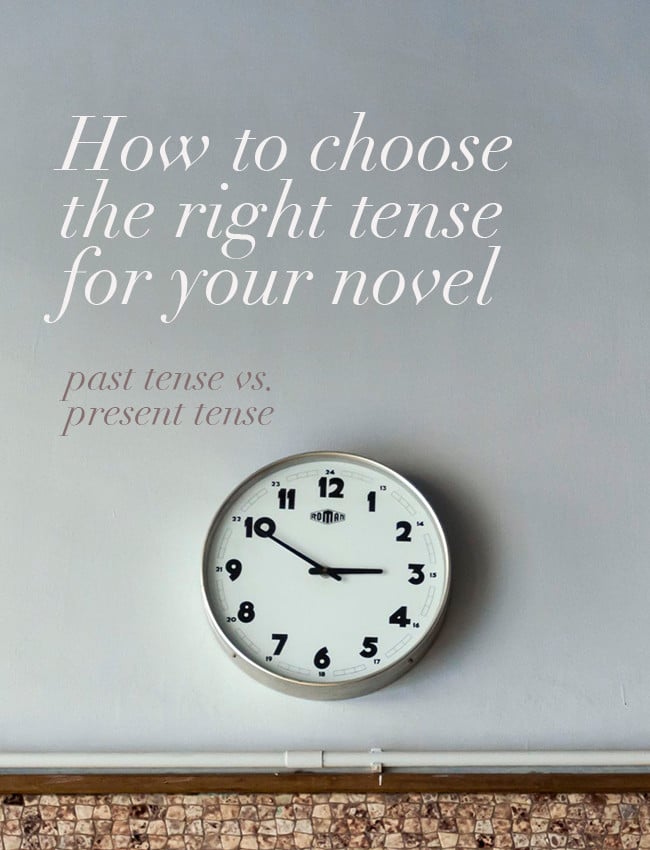
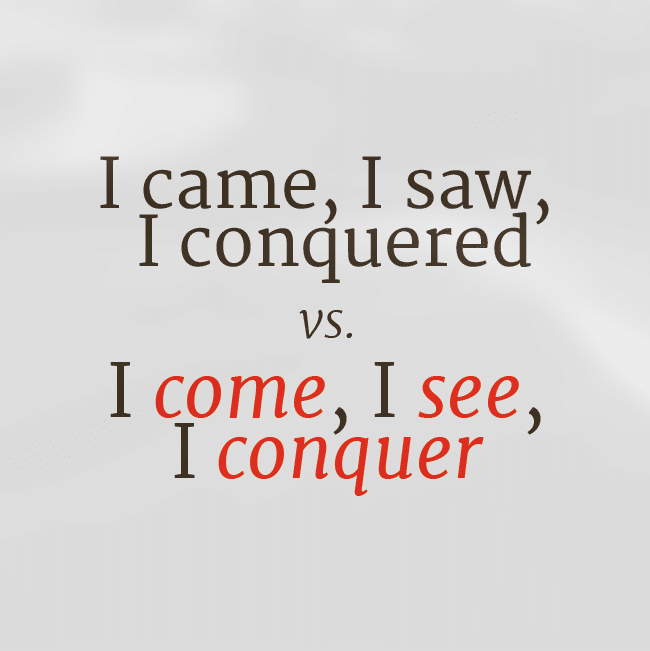
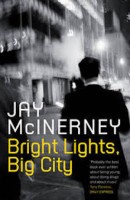 Bright Lights, Big City by Jay McInerney
Bright Lights, Big City by Jay McInerney